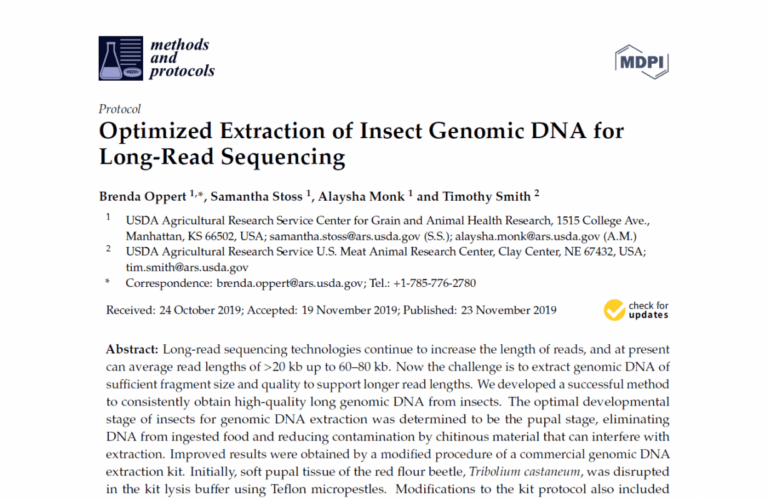
Methods & Protocols: The USDA Agricultural Research Service Center presented a rapid and reproducible method to obtain long genomic DNA with high quality from insect pupae for long-read sequencing. Brenda Oppert, Samantha Stoss, Alayasha Monk, and Tim Smith showed that by using the Omega Bio-tek E.Z.N.A.® Insect DNA Kit, they were able to achieve consistent and superior extraction of genomic DNA from insects.
Abstract: Long-read sequencing technologies continue to increase the length of reads, and at present can average read lengths of >20 kb up to 60–80 kb. Now the challenge is to extract genomic DNA of sufficient fragment size and quality to support longer read lengths. We developed a successful method to consistently obtain high-quality long genomic DNA from insects. The optimal developmental stage of insects for genomic DNA extraction was determined to be the pupal stage, eliminating DNA from ingested food and reducing contamination by chitinous material that can interfere with extraction. Improved results were obtained by a modified procedure of a commercial genomic DNA extraction kit. Initially, soft pupal tissue of the red flour beetle, Tribolium castaneum, was disrupted in the kit lysis buffer using Teflon micropestles. Modifications to the kit protocol also included gentle mixing by inversion of the tube, instead of harsh vortexing steps, and using wide-bore pipette tips in transferring fractions containing genomic DNA. Data from one sample were provided as an example of successful downstream library production and sequencing. While the technique has been optimized for insects, extractions from tissues of other organisms using these modified procedures also may improve long-read sequencing results.
